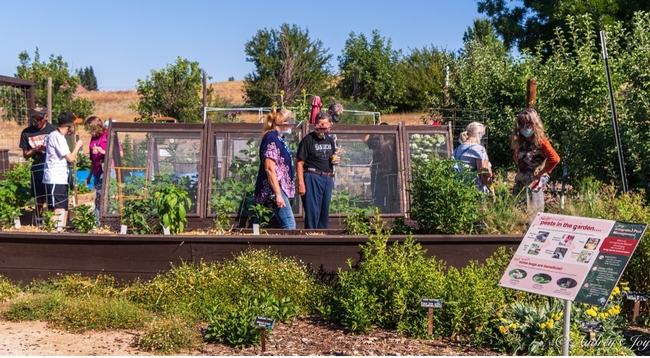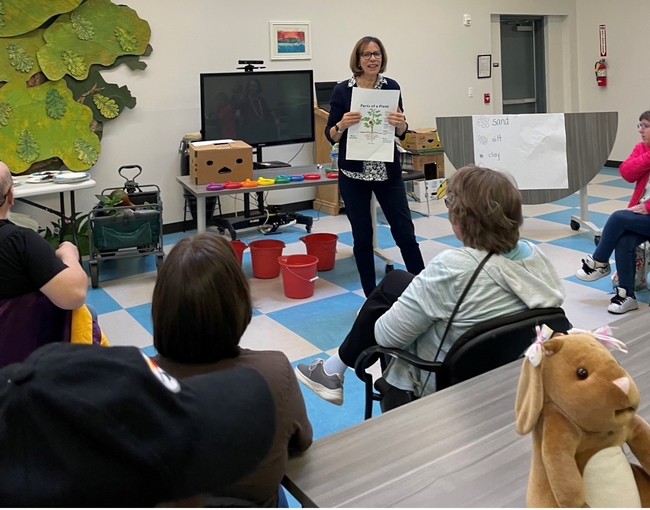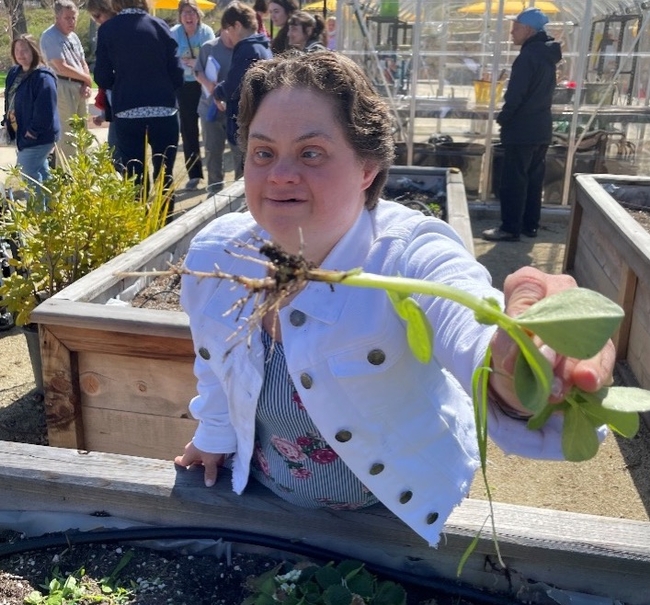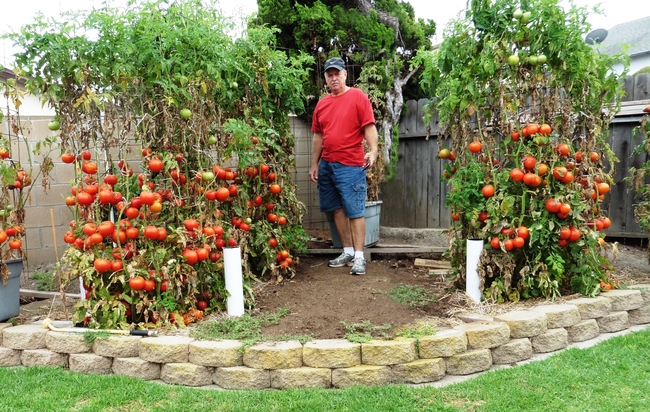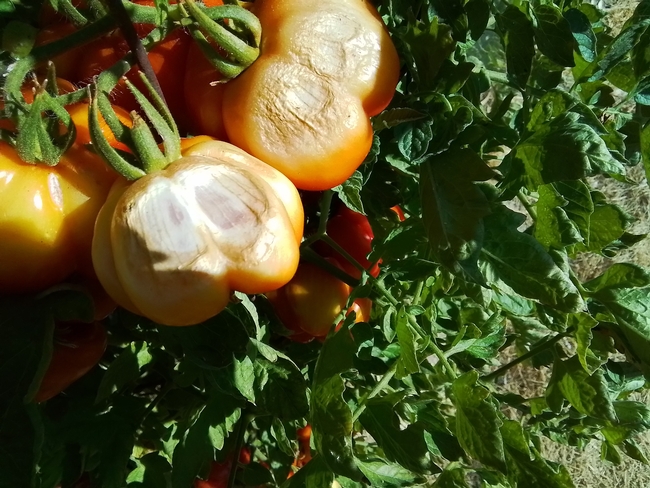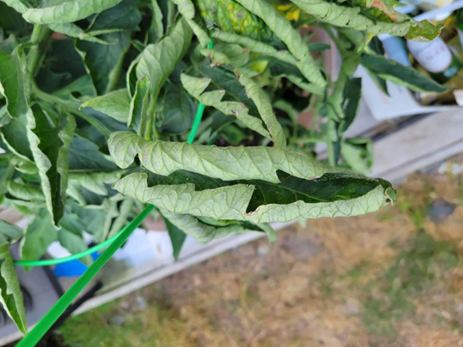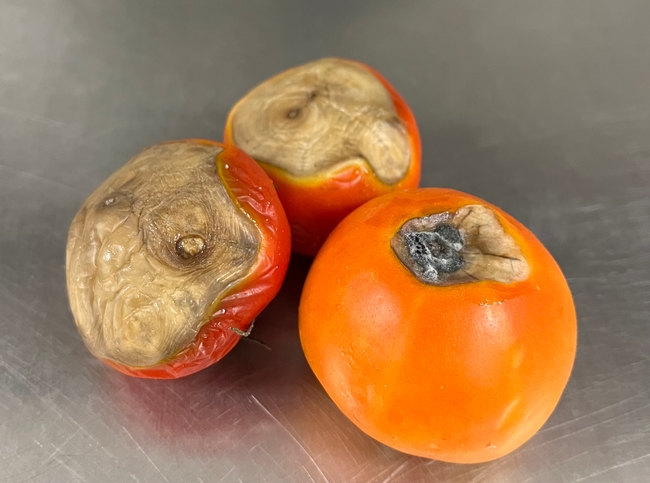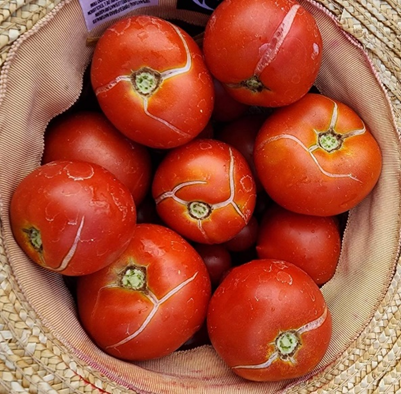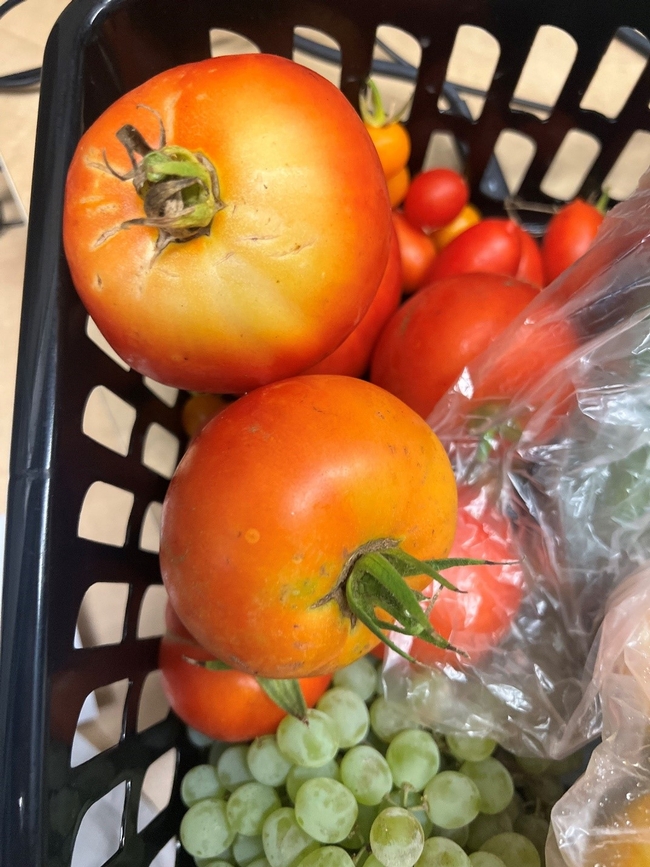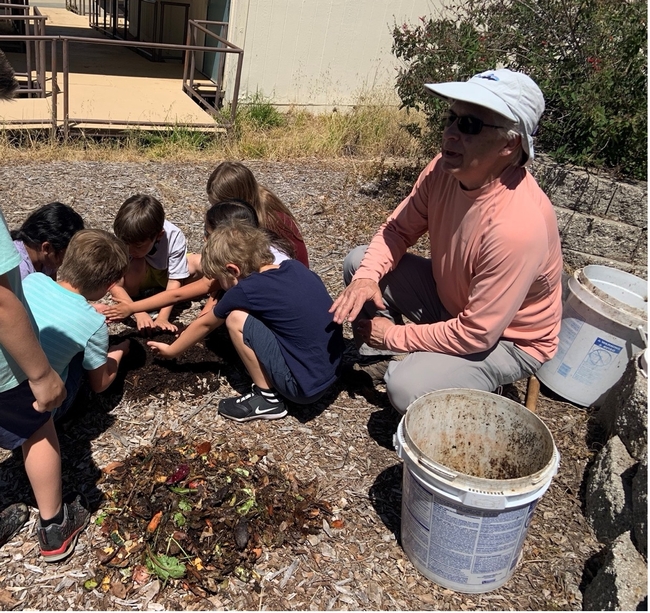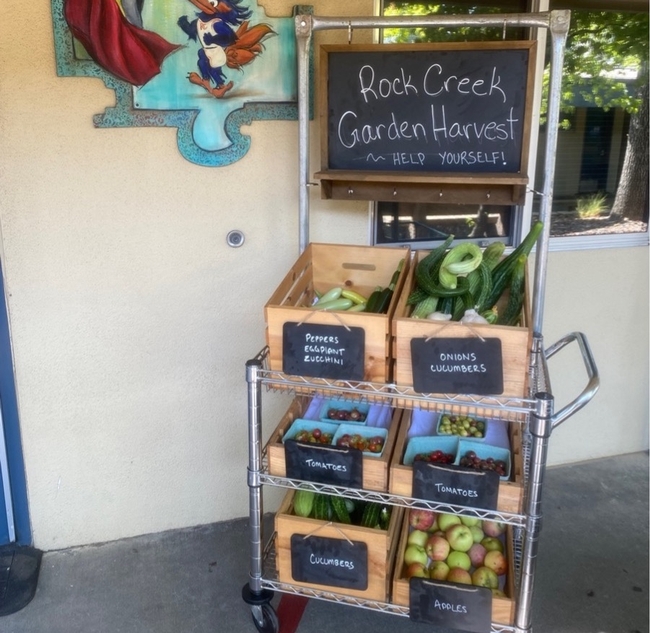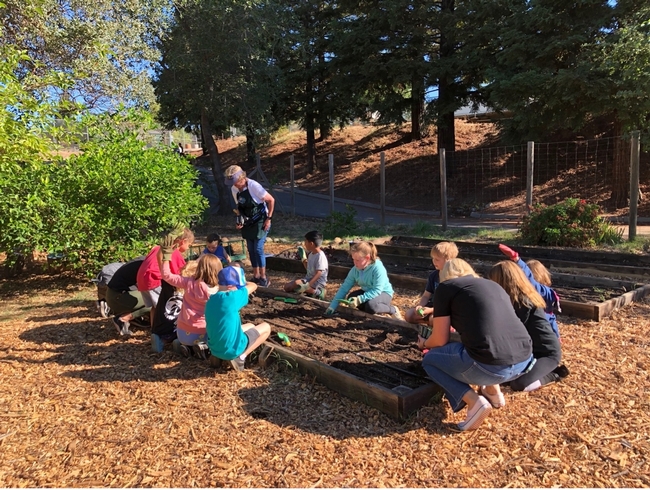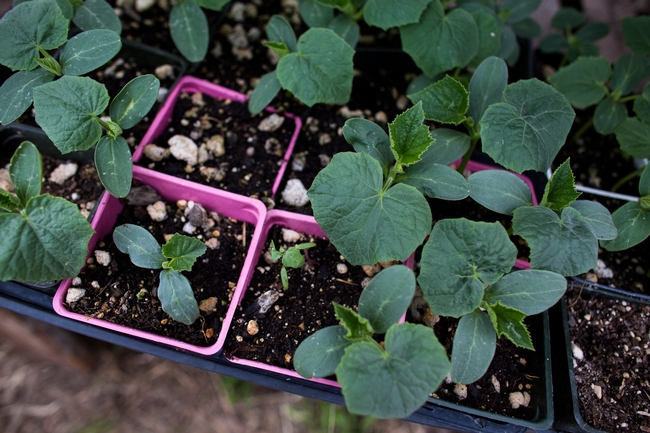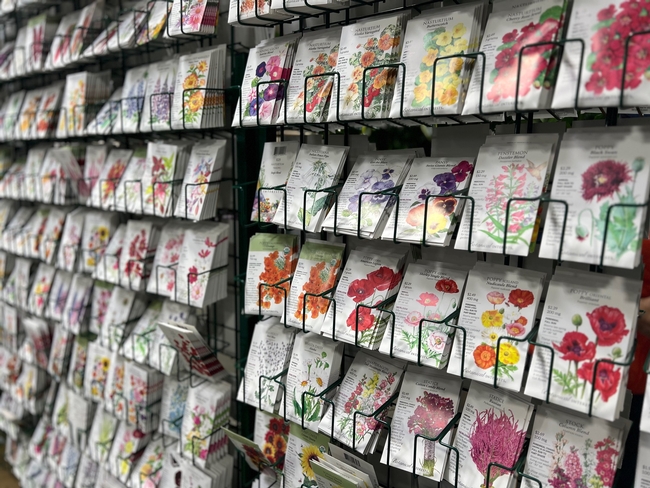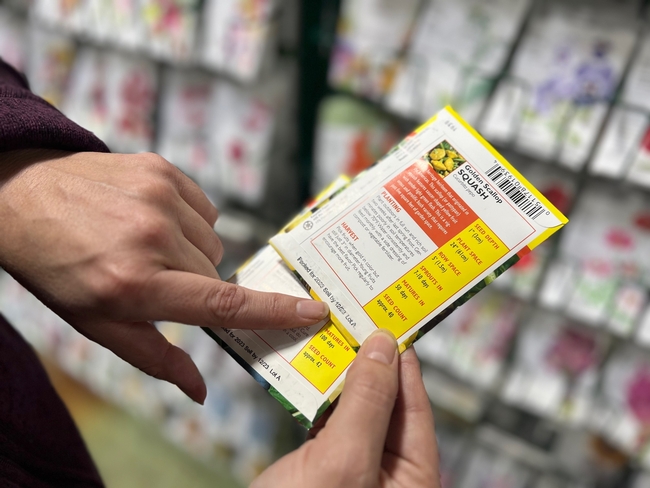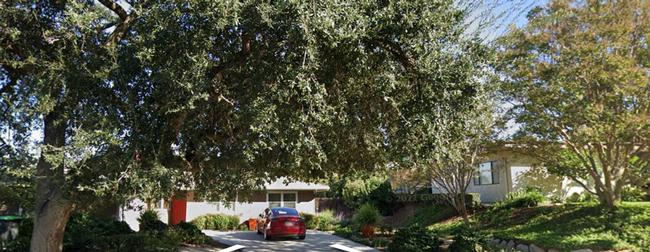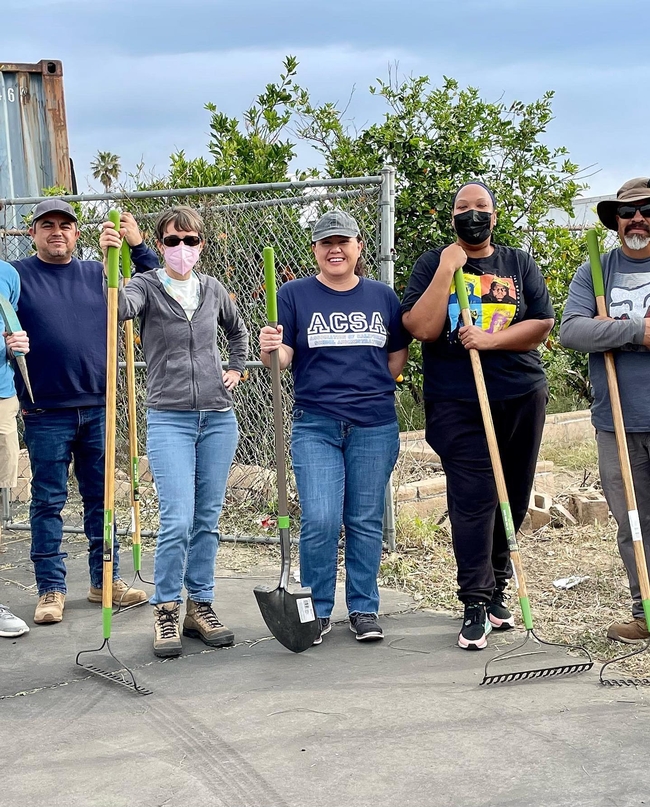Posts Tagged: Food
Award-Winning Excellence, Community, and Empowerment in El Dorado County
In the rolling foothills of El Dorado County, Calif., a beautiful community garden thrives. Not just an ordinary garden plot, but a community space that cultivates life skills, self-confidence, and weaves a vibrant tapestry of community. The architects of this garden are the UC Master Gardeners of El Dorado County and their partners CalFresh Healthy Living, UCCE (CFHL, UCCE) and the Mother Lode Rehabilitation Enterprises (MORE), a non-profit supporting adults with disabilities. Together, they've crafted a pathway to equal opportunities, inclusivity, and engaging experiences for the clients at MORE.
Recently, the team's extraordinary efforts were recognized statewide in the UC Master Gardener Program's Search for Excellence awards for their commitment to expanding the program's reach to a typically underserved audience. “I was moved after reading the El Dorado MORE volunteer project that focuses on teaching adults with disabilities about gardening and growing food. UC Master Gardeners' dedication to creating an inclusive and empowering environment where individuals of all abilities can learn and flourish is inspiring,” commented a Search for Excellence committee member.
Transitioning from childhood to adulthood can be challenging for many people with disabilities. The path to continued learning and independence often becomes foggy and winding. It's a journey that calls for customized support, guidance, and resources. At the heart of MORE's fully inclusive program is a commitment to improving the quality of lives and making dreams come true for the people they serve.
In late 2018, a seed of collaboration was planted as MORE, the UC Master Gardener Program and CFHL, UCCE initiated a partnership built on shared goals—cultivating an enriched life for adults with disabilities. The blossoming garden-based lessons led by UC Master Gardener volunteers perfectly intertwined with CFHL, UCCE's nutritional education and MORE's education and MORE's mission.
In 2020 and 2021, despite the many challenges of COVID-19 UC Master Gardeners continued to provide harvested fruits and vegetables and deliver projects to MORE, even when in-person meetings were on hold. Following the pandemic shutdown, the partnership thrived anew in 2022, breathing new life into their mission with revised plans, fresh goals, and an updated curriculum. The renewed goals of the collaboration were as multi-layered as a well-tended compost heap: providing practical garden and nutritional instruction, introducing sustainable practices, promoting healthy food choices, and fostering skills leading to increased independence.
UC ANR's “Teams with Intergenerational Support” or TWIGS program for gardening and healthy eating curriculum, complemented by CFHL, UCCE's "Harvest of the Month" curriculum, was a perfect fit. This hands-on, research-based approach provided the ideal way for MORE clients to delve into the fascinating realms of botany and nutrition. Traditional methods of assessment often miss the mark when catering to adults with various abilities. Hence, the team innovated, embedding assessments within instruction, using interactive and engaging tools like stickers, thumbs-up/down gestures, and verbal responses. This fluid, dynamic approach ensures each participant can connect with the concepts and apply them to their daily lives.
One rewarding highlight includes clients adopting fruit trees at the Sherwood Demonstration Garden orchard, learning about seasonal changes, and assisting with pest management. This sense of ownership and responsibility is a profound result of the program's influence. Clients are actively involved in the food cycle—harvesting crops, preparing healthy meals, and understanding the nutritional value of what they eat.
In a world often focused on individual achievement, the story of the UC Master Gardeners of El Dorado County, CalFresh Healthy Living, UCCE, and Mother Lode Rehabilitation Enterprises serves as a reminder of the transformative power of community and collaboration. As their clients and garden continue to flourish, we are reminded that the journey to excellence is best undertaken together. This is a celebration of their award-winning work, a testament to the importance of community, and a heartwarming reminder of how we can all grow together!
Bring on the Tomatoes! 5 Common Tomato Problems and Solutions
Almost any home gardener will tell you that one of the most versatile and rewarding plants to grow in a summer edible garden is a tomato. In fact, a 2023 study by the National Gardening Association revealed that 86 percent of gardeners grow tomatoes. It is understandable that the tomato plant is a popular home vegetable garden staple, tomatoes offer thousands of different varieties options and flavors. Plus, nothing beats the bursting flavor of a ripe tomato straight from the garden.
When properly cared for, a single tomato plant can produce 10 to 15 pounds (4.5 to 6.8 kg) or more of fruit. As with any gardening journey, sometimes there can be obstacles or challenges to overcome. If tomato yields aren't what was expected, or the fruit is damaged, it could be due to a number of abiotic disorders, diseases or pesky pests.
Abiotic disorders result from non-living causes and are often environmental, for example: unfavorable soil conditions, too much or too little water, extreme temperature, physical or chemical injuries, and other issues that can harm or kill a plant. Using research-based information from UC Agriculture and Natural Resources (UC ANR) publication, Growing Tomatoes in the Home Garden.
Here are five of the most common abiotic disorders of tomatoes and how to address them:
- Sunburn or Sunscald: Yes, just like humans tomatoes can also suffer from sunburns because of overexposure to the sun. Sunburnorsunscald occurs on the side of the fruit exposed to the sun, which turns brown and becomes leathery in texture. Solutions:
- Maintain the plant canopy to produce adequate leaf cover for the fruit.
- Avoid overpruning.
- Provide partial shade during peaks sunlight hours.
- Leaf Roll: You might find that the older leaves on your plant suddenly roll upward and inward, becoming stiff, brittle and tough to the touch. This is typically caused by high light intensity and moist soil, especially in staked and heavily pruned plants. Solutions:
- Choose less-susceptible varieties.
- Maintain even soil moisture.
- Provide partial shade during peaks sunlight hours.
- Blossom End Rot: This condition appears as a water-soaked spot at the blossom end of the fruit, which enlarges and darkens, creating a sunken, leathery appearance. It's more prevalent in sandy soils and is primarily caused by calcium nutrition imbalance and inconsistent water levels. Solutions:
- Maintain even soil moisture.
- Amend planting area with compost to improve water retention.
- Avoid heavy applications of high-nitrogen fertilizer.
- Soils deficient in calcium may be amended with gypsum.
- Fruit Cracks and Catfacing: Rapid growth during high temperatures and excessive soil moisture can lead to circular concentric cracks around the stem end, radial cracks shooting out from the stem, and malformation and cracking at the blossom end, a phenomenon known as ‘catfacing'. Solution:
- Keep soil evenly moist.
- Maintain good leaf cover or provide partial shade during hours of most intense sunlight.
- Mulch around the plant 3 to 7 inches deep to maintain soil moisture and temperature.
- Solar Yellowing and Green Shoulders: This problem is marked by the tomato turning yellow or yellow-orange instead of the normal red color, with the upper part of the fruit stubbornly staying green even though the lower part appears red and ripe. It's a result of high temperatures and intense light. Solutions:
- Maintian plant vigor to produce adequate leaf cover.
- Avoid overpruning.
- Provide partial shade during hours of most intense sunlight.
A variety of insects and pests can cause other damage to tomato plants. Some examples of common pests, include: hornworms, tomato fruitworms, tomato pinworms, stink bugs, white flies, and leafminers. For information about identifying and managing pests in your edible garden visit the UC Integrated Pest Management (UC IPM) website, ipm.ucanr.edu.
Navigating the ups and downs of growing tomatoes might seem daunting, but don't forget, every seasoned gardener has been in your shoes once. We've explored the common abiotic diseases and challenges you might encounter in your tomato-growing journey, and hopefully armed you with solutions to keep these issues at bay.
If you have additional questions or need more help, don't hesitate to reach out to your local UC Master Gardener Program. We have a team of volunteers trained and eager to help you have a bountiful harvest! mg.ucanr.edu/FindUs
Source: Growing Tomatoes in the Home Garden Publication 8159 http://anrcatalog.ucanr.edu/pdf/8159.pdf
From the Classrooms to the Garden, Transforming Education in Placer County
As parents across the country start preparing for the next school year, the UC Master Gardeners of Placer County are demonstrating the extraordinary impact that school gardens can have on the community. UC Master Gardeners' dedication to nurturing a love for science and gardening in the youth shows us that every seed sown in these school gardens represents not just a plant but a life lesson, a commitment to sustainability, and a step towards a healthier future.
Every three years, UC Master Gardener Programs across the state have an opportunity to showcase their incredible projects, with the goal of inspiring others on how gardening can transform people and communities. The award-winning second-place project, "Engagement + Education + Enthusiasm = School Garden Success!" has touched the lives of numerous young learners in Placer County.
Over the last few years, the UC Master Gardeners of Placer County have provided valuable support to more than thirty schools. Last year they ramped up their support in seven of those schools by implementing a program to recruit principals and parent garden leads to revive or enhance school garden classes. In partnership with UC CalFresh Healthy Living, one of their focus areas was partnering with Title 1 schools where a high percentage of students are from low-income families. UC Master Gardener volunteers have created engaging, outdoor garden activities that go beyond traditional textbooks, sparking a love for nature and healthy living in students. The program delves into exciting topics like plant care, photosynthesis, the role of worms in soil creation, and the delicious benefits of eating fresh vegetables. Some of the delicious vegetables grown in school gardens are fresh spinach, lettuce, peas, fava beans, and carrots!
Additionally, parents are becoming an integral part of the project, fostering closer relationships between the schools and families. Parents' involvement ranges from assisting in classroom gardening sessions to leading discussions about nature, plant life, and sustainability. "The partnership with UC Master Gardeners of Placer County has been invaluable. It's inspired me to get more involved with the Parent Teacher Club and attend quarterly meetings. I am so much more involved with all of the parents and staff at Skyridge because of the inspiration and encouragement I have knowing the UC Master Gardeners are involved,” one parent remarked.
The rewards of this initiative are truly inspiring! “Our Larry Ford Outdoor Classroom and Garden is a focal point of teaching and learning on our campus. Our amazing team of Garden Docents, who are directly supported by Placer County [UC] Master Gardeners, have created a beautiful outdoor space for learning,” says Skyridge Elementary Principal Wright. “Students and staff enjoy visits that include academic lessons, planting seeds, harvesting crops, eating fresh vegetables, and taking a quiet break from the day to walk through the Mindfulness Maze. Providing opportunities for our students to learn in our Larry Ford Outdoor Classroom is a priority for our school community, and the [UC] Master Gardeners have become an instrumental piece in making that dream a reality.” Many students have started experimenting with new fruits and vegetables and gardening at home. Of the students surveyed, 53% ate a fruit or vegetable that they had never considered trying before, and 44% are now gardening at home.
The UC Master Gardener team is working to build valuable partnerships to continue expanding the number of school gardens across the county every year. By partnering with school boards, garden clubs, and community non-profits, they are working together to create a more sustainable, greener future for Placer County and its youth.
Congratulations to the UC Master Gardeners of Placer County for coming in second place in the Search for Excellence competition. Your hard work and dedication to excellence are truly commendable. Well done!
Get a Head Start on Your Garden by Starting Your Vegetable Seeds Indoors
February is a great time to start preparing for your spring and summer vegetable garden, especially if you want to get a head start on the growing season. According to the California Master Gardener Handbook, growing your own transplants from seed indoors can extend your garden season by several weeks, reduce your gardening cost and allow you to grow a more diverse variety of crops.
Growing from seed is not only fun, but it can also save you money. When stored properly a typical seed packet can last several years. Seeds should be started indoors or in an outdoor hot box or cold frame. Start growing the seeds 6-8 weeks before the date you would like to transplant them and when the threat of frost has passed.
Another benefit of growing vegetables from seed is the wide selection of varieties available from seed catalogs. Growing different varieties is important for an extended harvest and to find plants that grow well in your area. Vegetable plants sold in seedling form are generally available in only one or a few varieties. Plants typically started by seeds indoors include broccoli, cauliflower, eggplant, parsley, tomatoes and peppers. Seeds typically started in the ground include beans, beets, carrots, peas and turnips.
What do you need to get started?
- Soil mix - The soil media you choose should be fine textured, uniform and airy. Do not use garden soil. It is usually too heavy and often may have disease-causing organisms. A commercial potting mix suited to starting seeds will work well. Fill your growing containers about 2/3 full.
- Containers - You can start seeds in almost any container that has drainage holes. Sterilize recycled containers in a 1:9 bleach to water solution, rinse them well and let them air dry prior to use.
- A location with proper light and temperature - A sunny window is usually the perfect spot as it has strong but indirect sunlight. Seed packages should instruct you on sunlight needs. Additionally, keep your seedlings in an area that stays between 65 and 70 degrees during the day and 55-60 degrees at night.
- Quality Seeds – Only plant seeds from a reputable source. Check your seed packets to ensure your seeds have not expired, and that you are planting them at the right time of year. You can also check for seed viability.
- Water – It is crucial to provide seeds with consistent watering. Seeds and seedlings must be kept evenly moist to thrive.
Steps to starting your vegetable garden indoors
- It is important to follow the instructions on your seed packet. Refer to the seed packet for the proper planting depth, plant spacing, and days to maturity.
- Once you have planted your seeds, water them and continue to do so consistently. The goal is to keep the soil evenly moist but not overly wet.
- Two weeks before transplanting, or when your plants are two to four inches tall, expose them to outdoor temperatures to acclimate them. Do this by leaving them outside in a shady spot during the day for a week, and bringing them inside at night. The following week, leave them outside in their containers during the day and at night, gradually exposing them to more sunlight. This process is referred to as hardening off.
- Transplant your vegetables into the garden, planting them at their original depth. Tomatoes can be an exception to this rule however, so consider this tutorial before planting tomato seedlings. Be sure to handle seedlings with care.
Ask your local UC Master Gardener Program
Have a seed starting or home vegetable gardening question? UC Master Gardener volunteers are available to help. Click here to Find a Program and connect with your local UC Master Gardener Program. You will be redirected to your local county website and contact information. UC Master Gardener volunteers are available to help answer questions for FREE. Happy gardening!
Drought Resources for Keeping Trees Alive
University of California Cooperative Extension Drought Resources To Keep Your Plants Alive
"Trees Come First Under Drought and Water Restrictions"
Keeping Plants Alive Under Drought and Water Restrictions (English) https://anrcatalog.ucanr.edu/pdf/8553.pdf
Keeping Plants Alive Under Drought and Water Restrictions (Spanish) https://anrcatalog.ucanr.edu/pdf/8628.pdf
Prioritizing Trees During Drought and Water Restrictions (5 minute Youtube)
https://www.youtube.com/watch?v=CTKLlJgdLVk
Tips to Keep Your Landscape Trees Alive Under Drought https://ucanr.edu/b/~IjC
Landscape Tree Irrigation to Maximize Tree Health, Benefits, and Beauty https://ucanr.edu/b/~YjA
Landscape Tree Irrigation 101 https://ucanr.edu/b/~UjA
Top 10 Ways to Conserve Water in Your Landscape and Garden https://ucanr.edu/b/~tTD
Asphalt and Synthetic Turf are Superheating our Cities (in Desert Sun newspaper) https://www.desertsun.com/story/opinion/contributors/valley-voice/2022/04/09/coachella-valleys-asphalt-synthetic-lawn-heat-islands-reach-170/9515857002/
Use of Graywater in Urban Landscapes in California https://anrcatalog.ucanr.edu/pdf/8536.pdf
Need More Help? Speak to a UC Cooperative Extension Master Gardener in Your County of Residence.
Find email and phone helplines here: Find a UC Master Gardener Program - UC Master Gardener Program (ucanr.edu)




